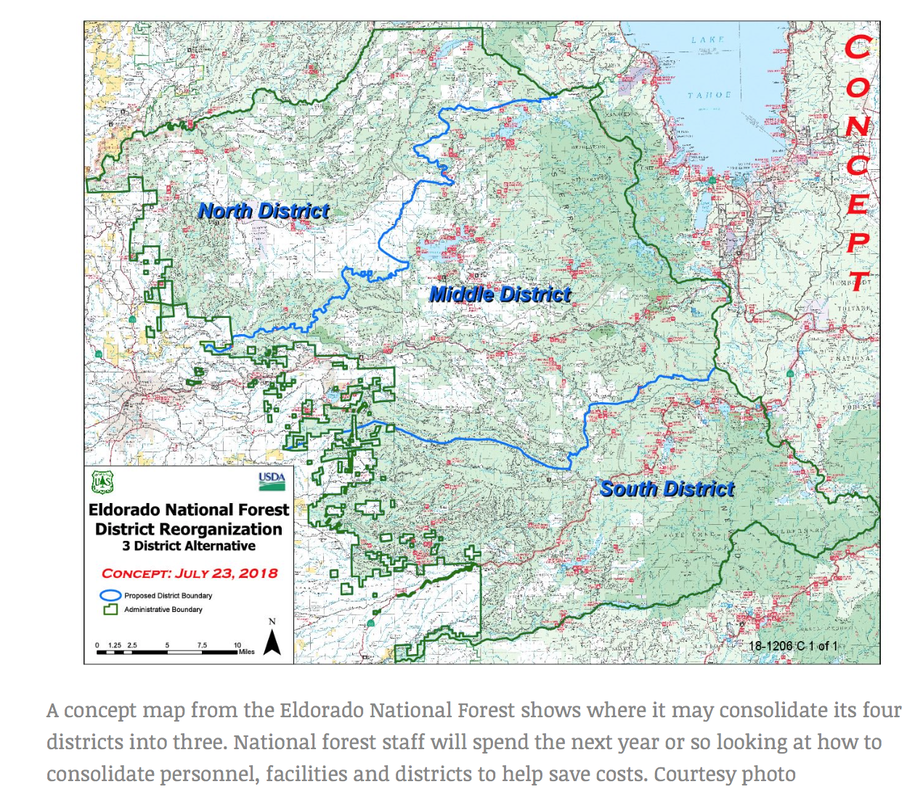Eldorado National Forest spokeswoman Jennifer Chapman said the change is at least a year out. While much of the shift will be administrative, Chapman expects it will impact the public the most in terms of visitor services, which the national forest anticipates will go from three service centers along the Highway 50 corridor to two.
She also said new maps will be redrawn once district boundaries are configured, based on geographical features and land ownership near the forest. United States Forest Service visitor guides will be updated and reprinted when the reorganization is complete, and Chapman said her office intends to ramp up communication around Memorial Day weekend, when many people start heading outdoors.
The Placerville and Pacific Ranger Districts will be most affected by the boundary shift, Chapman said, since they both contain the Highway 50 corridor.
Before the El Dorado County Board of Supervisors on Oct. 30, Forest Supervisor Laurence Crabtree said consolidating the forest’s four regions — Placerville, Pacific, Amador and Georgetown — would mean having fewer high-level employees.
The reorganization may involve moving staff to the Institute of Forest Genetics, a USFS property off Carson Road that Crabtree said is relatively vacant.
“My job is to put pressure on every position and not fill any of them that we don’t have to have,” Crabtree said.
Chapman said the reorganization wouldn’t involve cutting staff already employed, but eliminating positions that are vacant a. The agency lacks adequate funding to fill about 50 non-fire vacancies, she said. Fewer positions means fewer vehicles the USFS needs to keep running. It may also help with maintenance costs since fewer buildings will be occupied.
“If you have 50 percent of this building and 50 percent of that building occupied, you put everyone in the same building and save (on those costs),” Chapman said.
Money saved could then be redirected to forest management, a fact sheet about the reorganization said.
Chapman didn’t have hard numbers of how much money the consolidation will save the Eldorado National Forest in the long run, since reorganization is in early stages. But the forest is hoping to do more with less, bringing on other agencies to collaborate on projects like fuel reduction, restoration and timber production.
“The key thing is there are a number of activities shifting to partnerships and in some instances, shifting to the private sector,” Chapman said. She pointed to work in the forest being completed through grants from Cal Fire and the Sierra Nevada Conservancy. Other forest projects are being managed through groups like the Mule Deer Foundation and the National Wild Turkey Federation, versus through USFS staff.
Chapman said the conversation of consolidating forest staff and districts has occurred under previous forest supervisors, mostly due to activities along the Highway 50 corridor. But now that vacancies remain unfilled, Chapman said the reorganization is more compelling.
“It’s starting to make sense,” she said.

 RSS Feed
RSS Feed